TSA Will Continue Extra Screening for Passengers After Security Breach

Airport security isn’t exactly the most thrilling part of travel. However, going through the motions and abiding by the Transportation Security Administration’s (TSA) rules is necessary to ensure everyone’s safety. The agency constantly issues reminders about what you can and cannot take through checkpoints, but sometimes breaches do occur—and one security incident prompted the agency to flag certain passengers for additional screening. Now, it appears that TSA will continue extra screening as it investigates the breach. Read on to find out why you could be stopped.
RELATED: TSA Announces It Will Flag Certain Passengers for Extra Screening.
The Clear service is facing scrutiny.
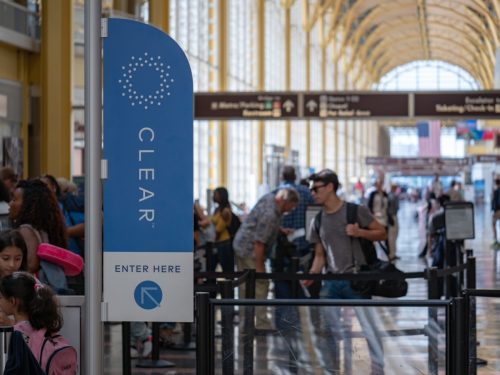
The Clear Secure service helps save you time at security, offering a separate line where travelers are verified using biometric data and then escorted to the front of the security line. The service is a bit more expensive than TSA PreCheck, at $189 a year—and its major selling point is the fact that you don’t have to take out your ID to go through the checkpoint.
However, earlier this month, The Washington Post reported that TSA sent a letter to Clear and airports that offer the service, informing them that “an increasing number of Clear members” would be flagged and asked to present identification at checkpoints.
TSA began randomly checking Clear members’ IDs following a July 2022 security incident, but the agency didn’t initially share additional details. Now, Bloomberg reports that the incident involved a Clear traveler using a fake name—who was trying to carry ammunition through the checkpoint.
RELATED: TSA Issues New Alert on What You Can’t Bring Through Security.
TSA says there are some flaws in Clear’s enrollment process.
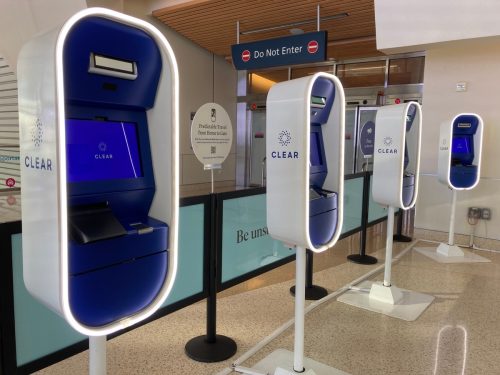
According to Bloomberg, the U.S. government claims it has identified flaws in Clear’s process. People familiar with TSA’s review told the outlet that the “facial-recognition system to enroll new members was vulnerable to abuse.” The sources asked not to be identified while discussing sensitive information.
To enroll in Clear, customers’ driver’s licenses or IDs are scanned and a computer then takes a picture of the applicant on the spot. That image is then matched to the photo ID, and when using Clear at the airport, the company uses eye scans and fingerprints to ID the person, Bloomberg reported. However, some photos taken during the enrollment process obtained by Bloomberg are blurry and only show portions of customers’ faces.
In the past, when Clear’s facial recognition system couldn’t verify a traveler’s photo against their IDs, company employees manually verified applicants by matching them to their photo IDs. Clear no longer allows this, the company wrote in a press release refuting Bloomberg’s article, writing that it “took immediate action to end the practice that led to the human error.”
In response to the images published by Bloomberg, Clear also said that they “lack important details.” In the release, the company wrote, “Specifically the images in question were not relied upon during the secure, multi-layered enrollment process and CLEAR does not currently use face as a biometric to verify a member on the day of travel—we rely on fingerprints or iris.”
An incident last summer prompted TSA to take action.
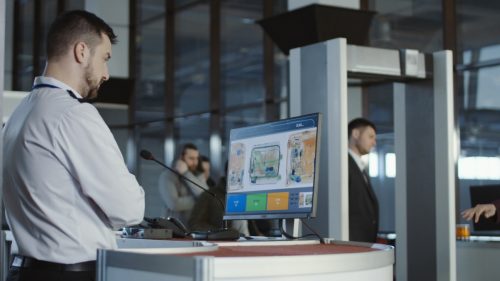
As sources told Bloomberg, travelers could potentially take advantage of Clear’s former process and enroll under a false identity. They could then fly with that information, as Clear’s biometrics would identify them using the fake details.
According to Bloomberg, this was the case last summer, when a man was able to travel through Reagan National Airport (DCA) in Arlington, Virginia. One Mile At a Time reports that ammunition was detected when the passenger’s bags went through the x-ray machine, then leading to a police investigation.
At that point, police determined that the passenger had made it through the Clear checkpoint with a false identity. According to Bloomberg, the man was enrolled in the service manually in Birmingham, Alabama, after the Clear computer identified him as a mismatch with his photo ID.
In response, Clear said that the incident was unrelated to their processes and “was the result of a single human error—having nothing to do with our technology.”
RELATED: 6 TSA-Banned Items You’re Forgetting to Take Out of Your Bag.
Clear passengers continue to undergo additional screening.
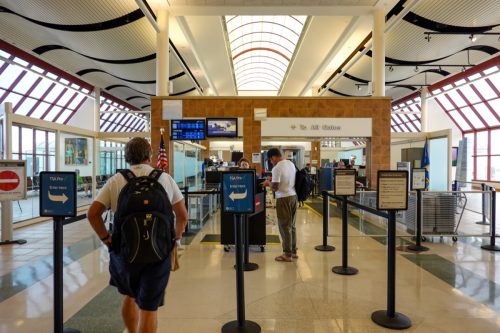
The security incident prompted the TSA investigation, and Bloomberg reports that there’s now a “high-stakes face-off” between Clear and TSA. Sources told the outlet that the agency cites about 49,000 Clear customers who have been enrolled after facial recognition software determined they were “non-matches.”
As a result, in June, TSA wanted to have its agents check the ID of all Clear members in order to avoid a potential terrorist attack. Currently, TSA is still flagging the increased number of Clear travelers, but its original demand to have agents screen all members by the end of this month has been delayed, two sources told Bloomberg. The outlet reported that the agency remains committed to this requirement, but said that Clear can continue to operate its separate lines at security.
“TSA is responsible for ensuring that all systems and programs, including those provided by private companies, meet requisite standards and will take necessary steps to ensure security needs are met,” a TSA spokesperson said in a statement previously provided to Best Life. “Accurate and reliable verification of passenger identity is foundational to aviation security and effective screening by TSA.”
In the press release, Clear wrote, “We share TSA’s unwavering commitment to aviation security, and have proven ourselves a capable and trusted partner for more than 13 years having performed over 130 million passenger verifications. We are disappointed that some continue to spin a false narrative about our company and the important role we play in aviation security as a Registered Traveler provider. We look forward to continuing to partner with our aviation stakeholders, including airports, TSA and the Department of Homeland Security.”
RELATED: For more up-to-date information, sign up for our daily newsletter.
Clear expressed concerns about TSA’s potential new regulations.
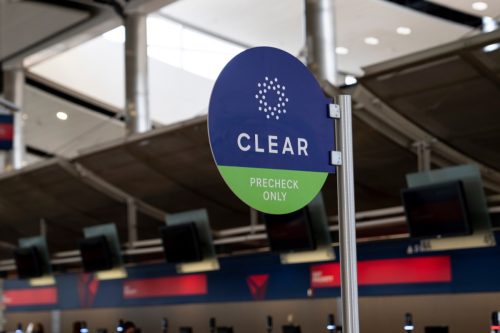
Per Bloomberg, Clear has raised concerns about potential “airport chaos” with TSA’s new policy in place. The company also enlisted former Department of Homeland Security Administrator Jeh Johnson to lobby on its behalf.
In a Dec. 2022 letter Johnson sent to TSA, which was obtained by Bloomberg, he said TSA’s stance was “a disproportionate and punitive overreaction” to last summer’s incident.
Clear said that members with questionable facial recognition had their identities verified by a minimum of two Clear employees, and Johnson noted in his letter that this number accounts for less than 1 percent of the company’s airport customers, Bloomberg reported.
Clear has also stopped allowing its employees to verify applicant identities. In his letter, Johnson said that while this was its process, employees could not see the computer-generated images of passengers taken during enrollment, so the poor photos published by Bloomberg didn’t really affect the process.
In addition, Johnson noted that the man traveling through DCA was Black, and he was permitted to be verified manually due to facial recognition’s decreased performance for people with darker skin.
In the press release, Clear also noted that the company has “fully re-enrolled the [minuscule] percentage of our customers” enrolled under the manual verification process.
“In the last six months alone, the TSA has reverified 4.7 million IDs without citing a single issue,” the company wrote in the release, adding, “CLEAR has consistently delivered on state-of-the-art technology that strengthens airport security and enhances travel for millions of passengers – and that is exactly what we will continue to do.”